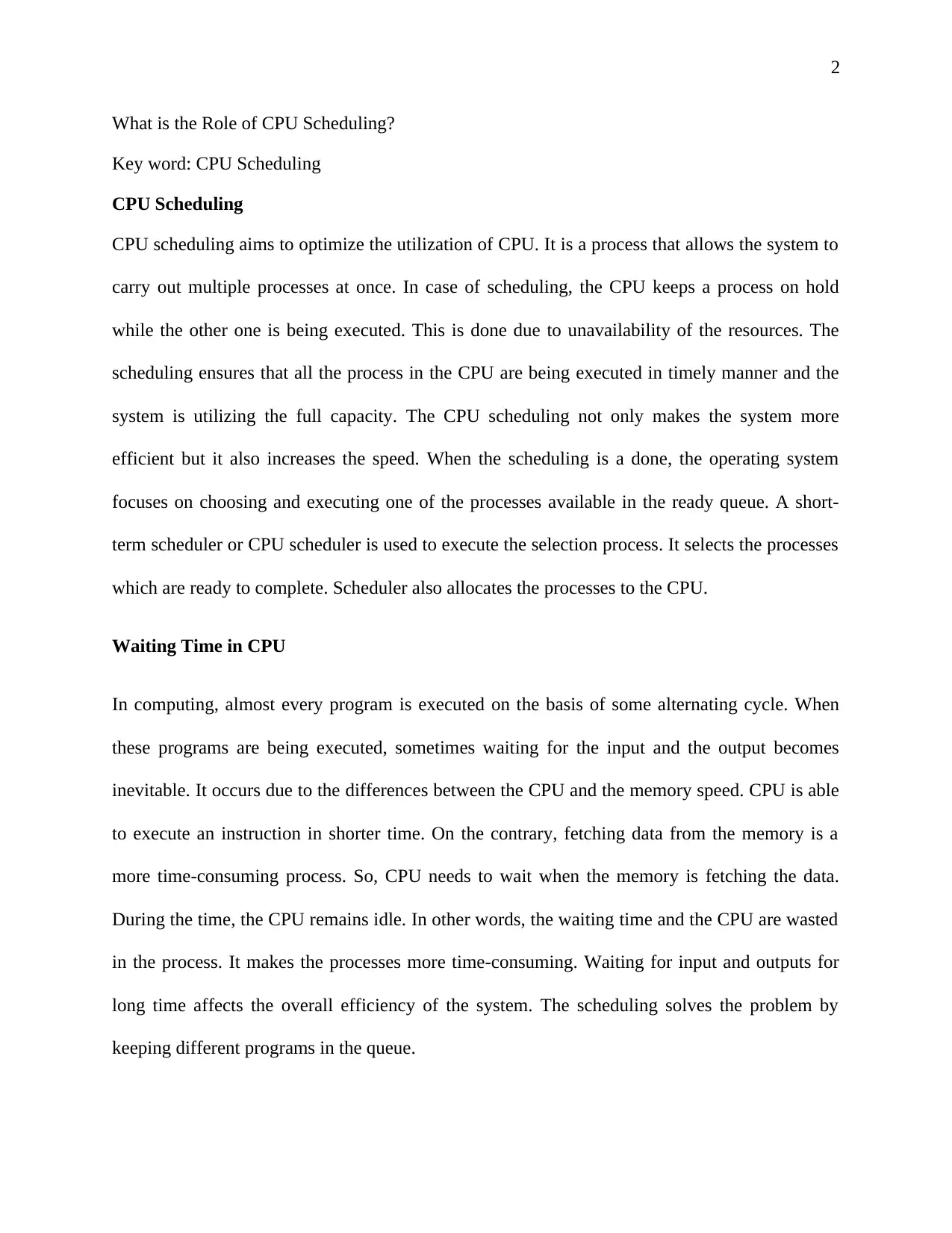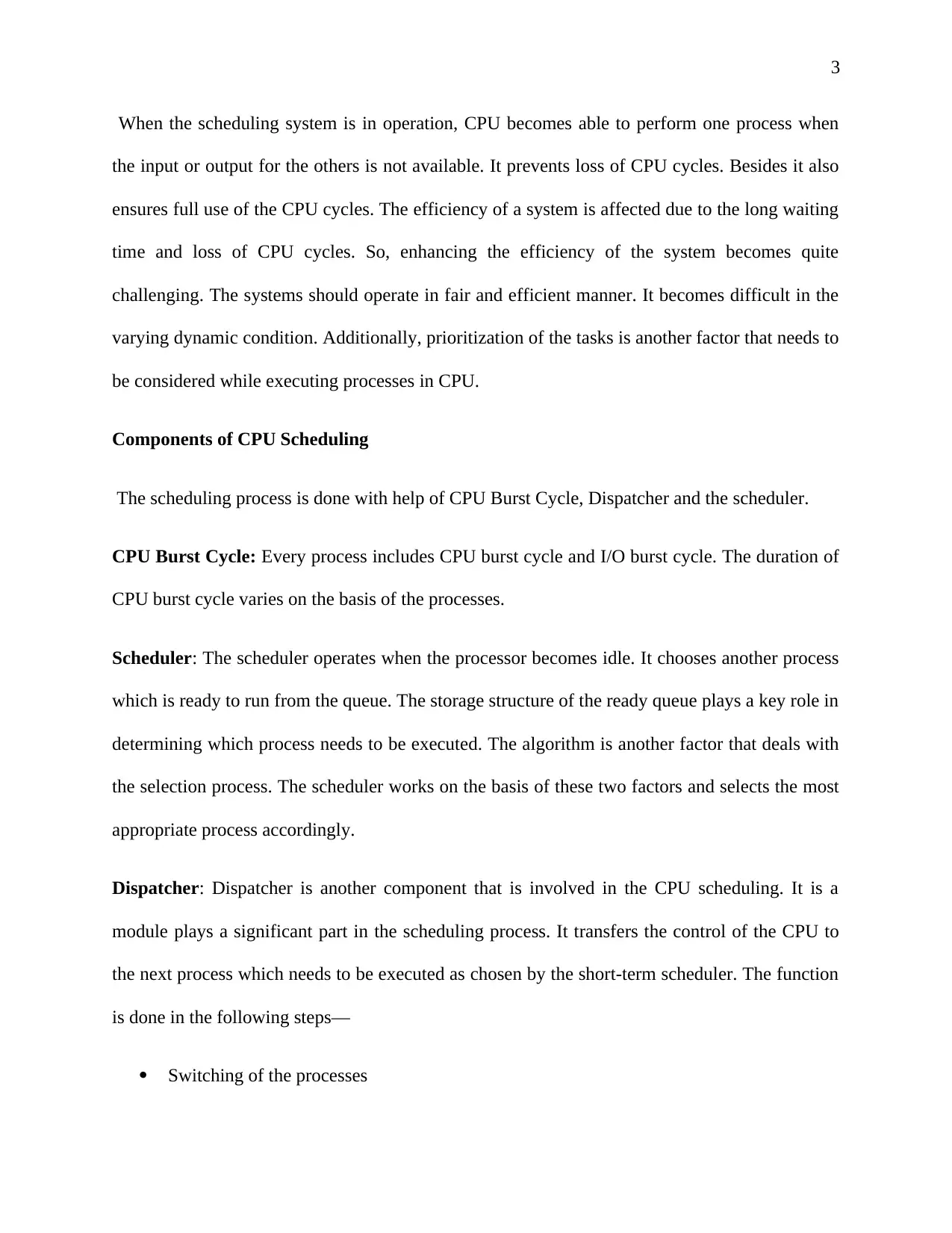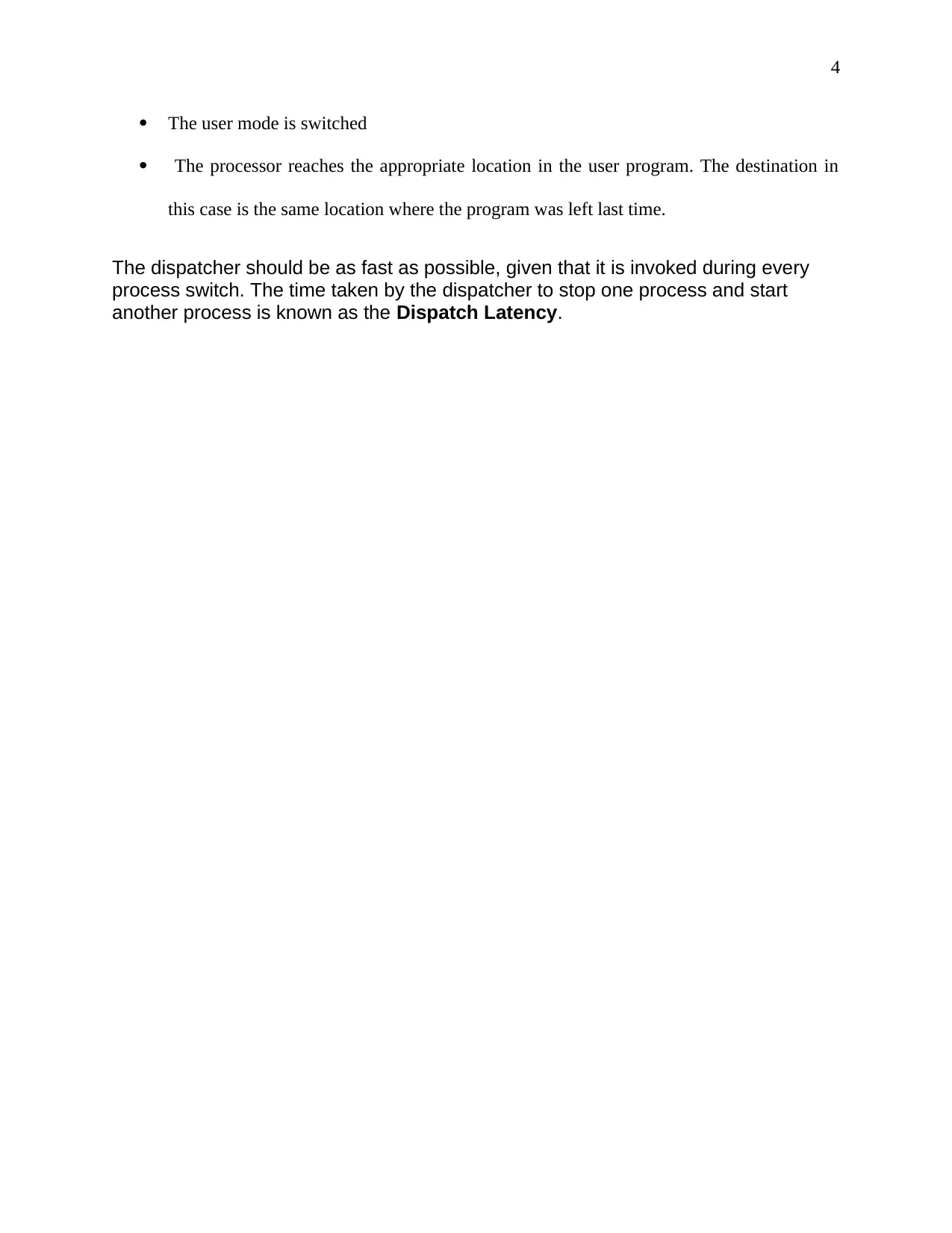Detailed Analysis of CPU Scheduling Components and Their Functions
VerifiedAdded on 2019/09/24
|4
|707
|374
Homework Assignment
AI Summary
This assignment provides a detailed overview of CPU scheduling, explaining its role in optimizing CPU utilization and managing processes within an operating system. It highlights the importance of scheduling in preventing CPU idleness and improving system efficiency. The assignment details the CPU burst cycle, scheduler, and dispatcher as key components of the scheduling process, explaining their functions. It also discusses the concept of waiting time and its impact on system performance, emphasizing how scheduling helps minimize this time and ensure optimal resource allocation. The assignment effectively explains the process of selecting and executing processes, emphasizing the role of the short-term scheduler and the factors that influence its decisions. The assignment also covers the dispatcher's role in transferring CPU control and the concept of Dispatch Latency, which is the time taken by the dispatcher to switch between processes. Overall, the assignment provides a comprehensive understanding of CPU scheduling and its impact on system performance.
1 out of 4











![[object Object]](/_next/static/media/star-bottom.7253800d.svg)